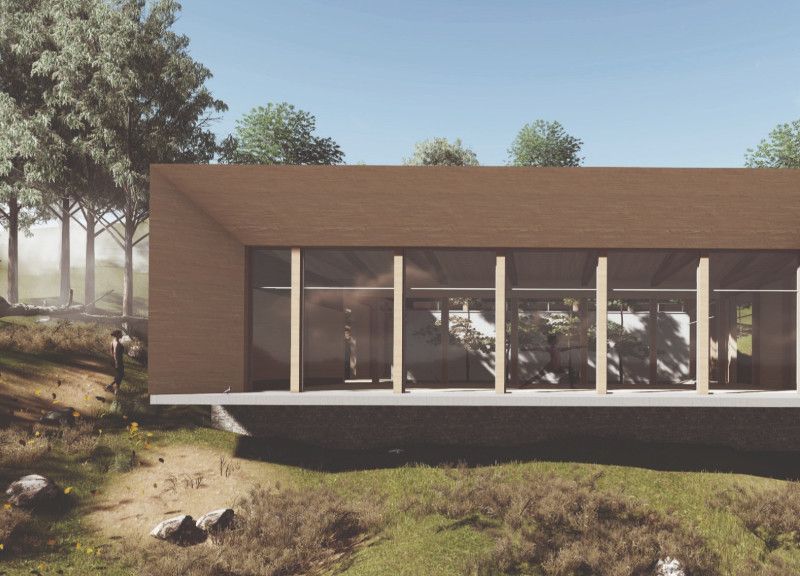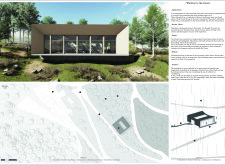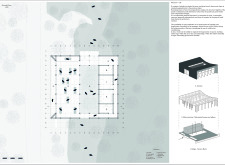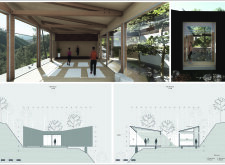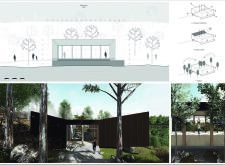5 key facts about this project
The structure employs cross-laminated timber (CLT) as the main building material, providing structural integrity while maintaining a warm aesthetic. Large glass panels dominate the exterior, allowing natural light to permeate the interior space. This transparency fosters a seamless interaction between the interior of the building and the forest surroundings, creating a sense of openness and tranquility. Stone is used at the base of the structure, grounding the design and merging it with its natural context.
The interior layout is thoughtfully organized to accommodate both communal and private activities. Centralized open areas facilitate group interactions, while quieter, more private zones support individual reflection and relaxation. The building’s orientation and the strategic placement of windows maximize views of the landscape, reinforcing the notion of the structure as an extension of the environment rather than a separate entity.
Unique Design Approaches and Environmental Integration
What distinguishes this project from typical architectural designs is its central theme of "breathing architecture." This concept leverages the natural properties of wood, enabling the structure to adapt to changing humidity and temperature conditions without relying heavily on mechanical heating and cooling systems. By embracing biophilic design principles, the retreat center promotes wellness through its integration with nature.
The landscaping around the retreat center has been carefully designed to enhance user experience and reinforce the connection to nature. Paths meander through the site, guiding visitors as they transition from the outdoors to the building. The preservation of existing trees and vegetation further supports the architectural intent, creating a natural tapestry that complements the retreat's environment.
Sustainable Practices and Community Engagement
The project actively incorporates sustainability measures, such as the use of solar panels and rainwater harvesting systems. These features not only reduce the environmental footprint of the building but also promote awareness among visitors regarding sustainable living practices. Furthermore, the facility is designed to serve as a community hub for yoga practitioners and those seeking wellness, fostering a sense of belonging and shared purpose.
In summary, the "Window to the Forest" yoga retreat center is a notable example of contemporary architectural design that seamlessly integrates with its environment. Its careful material selection, innovative design strategies, and commitment to sustainability make it a relevant addition to the discourse on environmentally conscious architecture. To gain deeper insights into the project, including architectural plans, sections, and design elements, interested readers are encouraged to explore the project's complete presentation.


